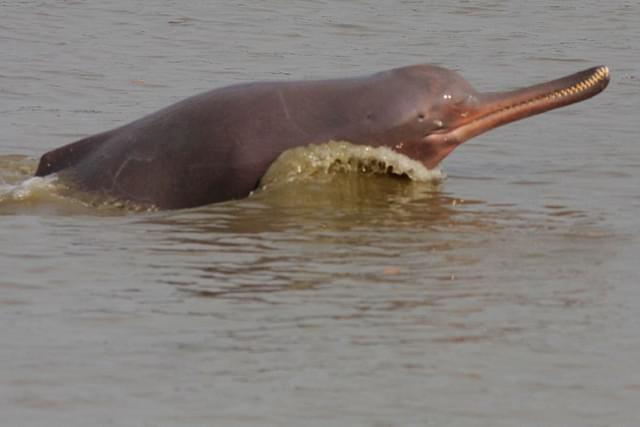News Brief
Modi’s Namami Gange Initiative Quietly Achieving Milestones — About 4,000 Dolphins Now In Ganga And Its Tributaries

Ganges river dolphin leaping out of the water. (Wikipedia)
Unprecedented efforts through the Namami Gange Mission to clean and purify the Ganga has led to an increase in the dolphin population in the river as per a report by The Statesman.
Experts view this as a positive environmental sign, indicating that the dolphins are thriving in the cleaner waters of the Ganga. The dolphin population is expected to continue growing.
According to the Wildlife Institute of India, there are currently about 4,000 dolphins in the Ganga and its tributaries.
In Uttar Pradesh alone, the estimated number of Gangetic dolphins is around 2,000, which is more than half of the total Gangetic dolphin population in India. The UP government has implemented a new tourism policy and declared a Dolphin Sanctuary area in Chambal Sanctuary.
Following the announcement of Project Dolphin by Prime Minister Modi, public curiosity about this unique and rare mammal has increased.
However, a large portion of the population remains unfamiliar with this charismatic megafauna. Thus, conserving Gangetic dolphins will not only raise awareness about this species but also bolster efforts to keep the Ganga clean and flowing.
Officials stated on Wednesday (22 May) that awareness and public participation are key components of the Namami Gange plans. A goal has been set to stabilise the Gangetic dolphin population and double the number of more endangered species by 2030.
The Clean Ganga Mission has successfully coordinated with state governments, experts, NGOs, and local communities. Pollution abatement measures, wetland conservation, and flow improvement initiatives under the Namami Gange Project have created a suitable habitat for the Gangetic dolphin population.
Notably, the river dolphin is a special megafauna of the Indian subcontinent, classified as endangered globally.
They are being conserved in India, especially in the Ganga and its tributaries, including the Ramganga, Yamuna, Gomti, Ghaghra, Rapti, Son, Gandak, Chambal, and Kosi rivers.
Support Swarajya's 50 Ground Reports Project & Sponsor A Story
Every general election Swarajya does a 50 ground reports project.
Aimed only at serious readers and those who appreciate the nuances of political undercurrents, the project provides a sense of India's electoral landscape. As you know, these reports are produced after considerable investment of travel, time and effort on the ground.
This time too we've kicked off the project in style and have covered over 30 constituencies already. If you're someone who appreciates such work and have enjoyed our coverage please consider sponsoring a ground report for just Rs 2999 to Rs 19,999 - it goes a long way in helping us produce more quality reportage.
You can also back this project by becoming a subscriber for as little as Rs 999 - so do click on this links and choose a plan that suits you and back us.
Click below to contribute.
Latest